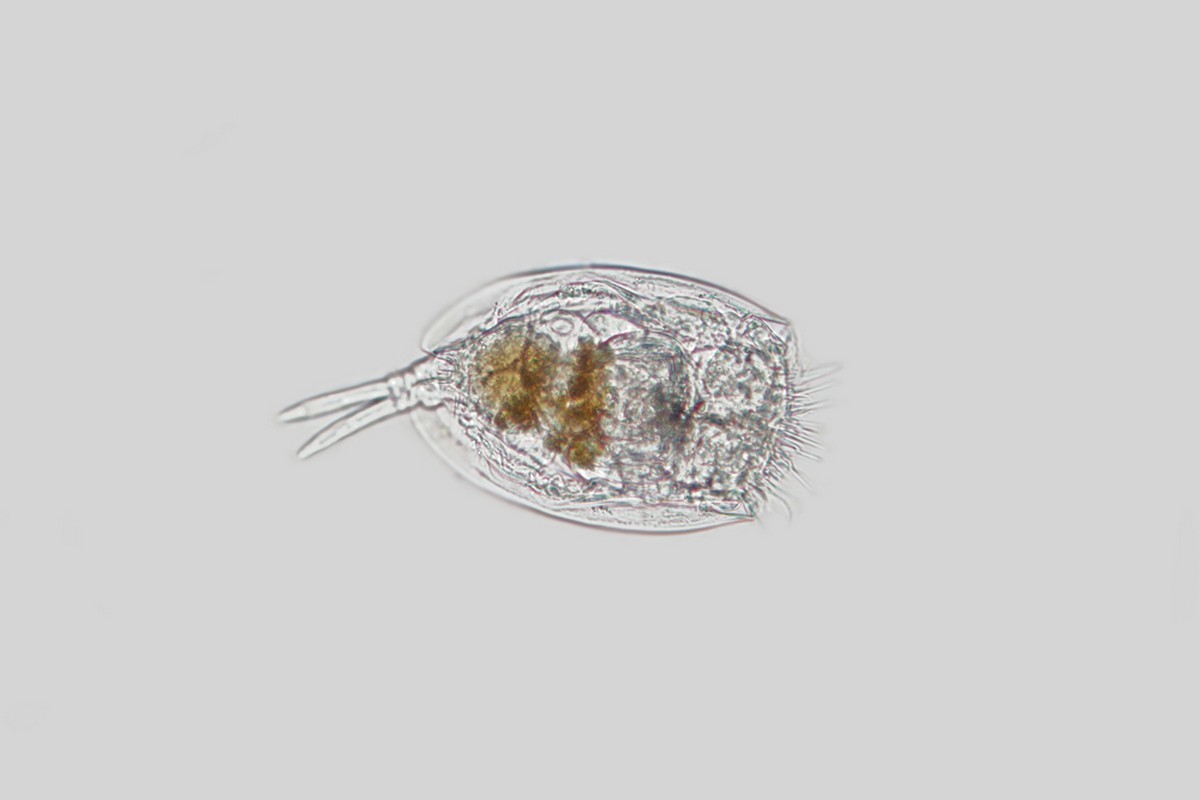4.4 Animal plankton

The group of animal plankton includes small heterotrophic organisms that inhabit water ecosystems. Heterotrophic organisms receive energy by consuming other living organisms.
Some animal plankton, such as ciliates, are unicellular protists. The group of animal plankton also includes small multicellular crustaceans such as copepods and water fleas.
The smallest animal plankton are only 50 micrometres in diameter, whereas the largest are a few millimetres in diameter. When you gather animal plankton in a test tube, you can distinguish small movements even without a microscope!
Flowing with water currents is common to animal plankton. Some animal plankton can also swim by using their antennas or cilia.
Animal plankton use smaller phytoplankton or other small organisms as their source of energy.
Animal plankton are themselves also food for other organisms. Small or young fishes in particular eat animal plankton.
The group of animal plankton is often considered to contain only small, microscopic animals. However, our waters are inhabited by a number of larger species that can be considered plankton. The most famous of these is the jellyfish found in the Baltic Sea. Large jellyfish can swim, but most of the time they flow with water currents.
The jellyfish is a cnidarian. It can swim by contracting its jelly-like body cavity.